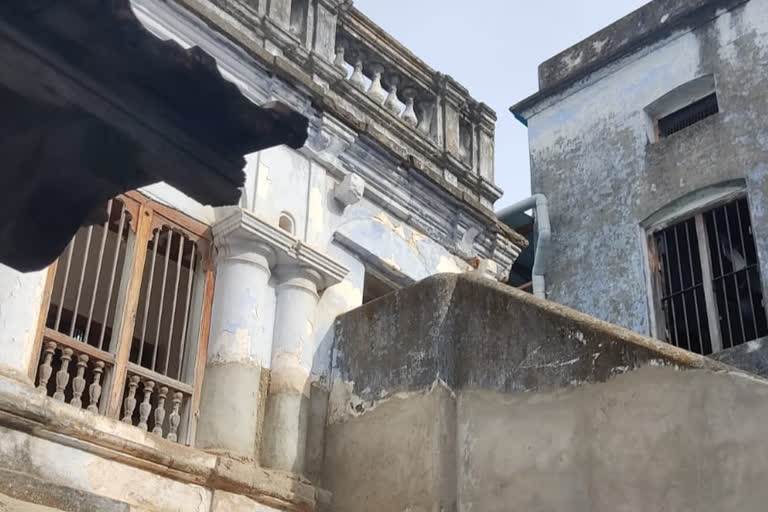Chennai: In the busy road leading to the Nellaiyappar temple, a celebrated shrine of lord Shiva in Tirunelveli, lies a school, which has lost its shine but remains a repository of a more than century-old history. It was not just education to women, but to the female wards of the twice discriminated – Devadasis, women dedicated to temples.
Established in 1863, the Upper Clapton School is located not on the outskirts, but in the heart of the city. Built in memory of Ann Sutton, a pioneer of women's uplift in the far east and South Asia, it is named after the Upper Clapton Society formed in London by wives of pastors. In fact, she was the originator of the Zenana Working Party which later became the Zenana Mission, a European missionary intervention in education and health services besides missionary work.
It is not known whether Sutton had ever visited Tirunelveli, but the school was first run by Emily Lewis, whose focus was on the female children of the Devadasis in Nellaiappar temple. The devadasi street was opposite the temple on the eastern side and the school was located in the adjoining street with a clear purpose.
During their visits in the locality, the women missionary workers found the girl children of the devadasis intelligent and grasping anything quickly, but sadly, they were illiterate. Among devadasis, there is a hierarchy in carrying out services in the temple and the girls born to them were confined to their homes. The chief devadasi was called 'kattalai dasi' without whom the temple rituals could not commence. There were others for lighting and cleaning the premises besides entertaining the benefactors to the temple with song and dance.
The male offspring were trained in music and became 'nattuvanaars' (teachers) while the girls had no such option, but were forced to take the oldest profession, which was the norm. “As such, it was a herculean task to bring them to the school. Lewis and her associates faced threats and violence for engaging in this. The Vellars and Brahmins were opposed to this and created all sorts of troubles.
The school building itself is constructed as a labyrinth with five entrances, providing easy access and exit to their homes. Also, there was a secret room where the children could be kept in safety in the event of any event of a violent attack. The stairs to the first floor were designed in such a way that any newcomer would be perplexed,” says researcher and publisher Lena Kumar, author of a soon-to-be-released book on the school.
Also read: What caste is emperor Raja Raja Chola?
“Interestingly, in the initial years all the girls had their father's name entered in the records as 'Aatkondaar', also meaning god in Tamil. The fact also remains that they do not know their father's name. Imagine the situation then. In 1859, there was a police firing on a mob of Vellalars and Brahmins, which indulged in arson and stone throwing to prevent the body of a Dalit convert from being taken on the main road. Also, these dominant landed communities were opposed to the education of the female children of devadasis,” explains Kumar.
Then came the missionary Amy Carmichael of Zenana Mission, who rescued girls sold and auctioned at the temple. She too faced the wrath of the dominant communities. The practice of poor parents selling off their girls aged above six or eight to the temple was in vogue then. According to recent studies, some parents, when faced with a disease or illness, took a pledge to dedicate the girls to getting cured. Amy herself has submitted to the colonial government on this.
Zenana, in Persian, meant the private space of women in the household, and the Church of England formed the Zenana Mission to work among women – women for women. In colonial India, the mission first stepped into Bengal in 1852 and then in Tirunelveli region in Tamil Nadu. While the school remained in Tirunelveli, she shifted to far off Dohnavur and established a home for the rehabilitation of the rescued girls. This was due to the constant trouble from the dominant communities. From Dohnavur, many first-generation teachers have come and now, it is a big institution with a hospital as well.
Closely associated with Dr. Muthulakshmi Reddy, the first woman surgeon in Madras Presidency and first legislator in British India, Amy was instrumental in the abolition of the devadasi system in 1947. But, she was engaged in the rehabilitation of girls dedicated to temples 85 years back. Significantly, Dr Reddy's mother too was a devadasi. Even earlier, Amy had played a crucial role in the colonial government passing the Indian Christian Marriage Act 1872, which made polygamy illegal for Christians.
“It was the caste rigidity and poverty that spurred the European missionaries to work in the Tirunelveli region and make it their centre of emancipatory work. The contribution of Zenana mission as well as the Upper Clapton School in particular has largely gone unnoticed and unrecognised even within the church,” laments Kumar.
Upper Clapton School will celebrate its 160th year in 2023, yet even the teaching staff at present are unaware of its origins and the noble purpose behind it as well as the seminal role it had played in the region that even its sesquicentenary had passed off without being noticed. The school building with exquisite wooden works and a labyrinthine design requires renovation so that it is brought to its original glory.



